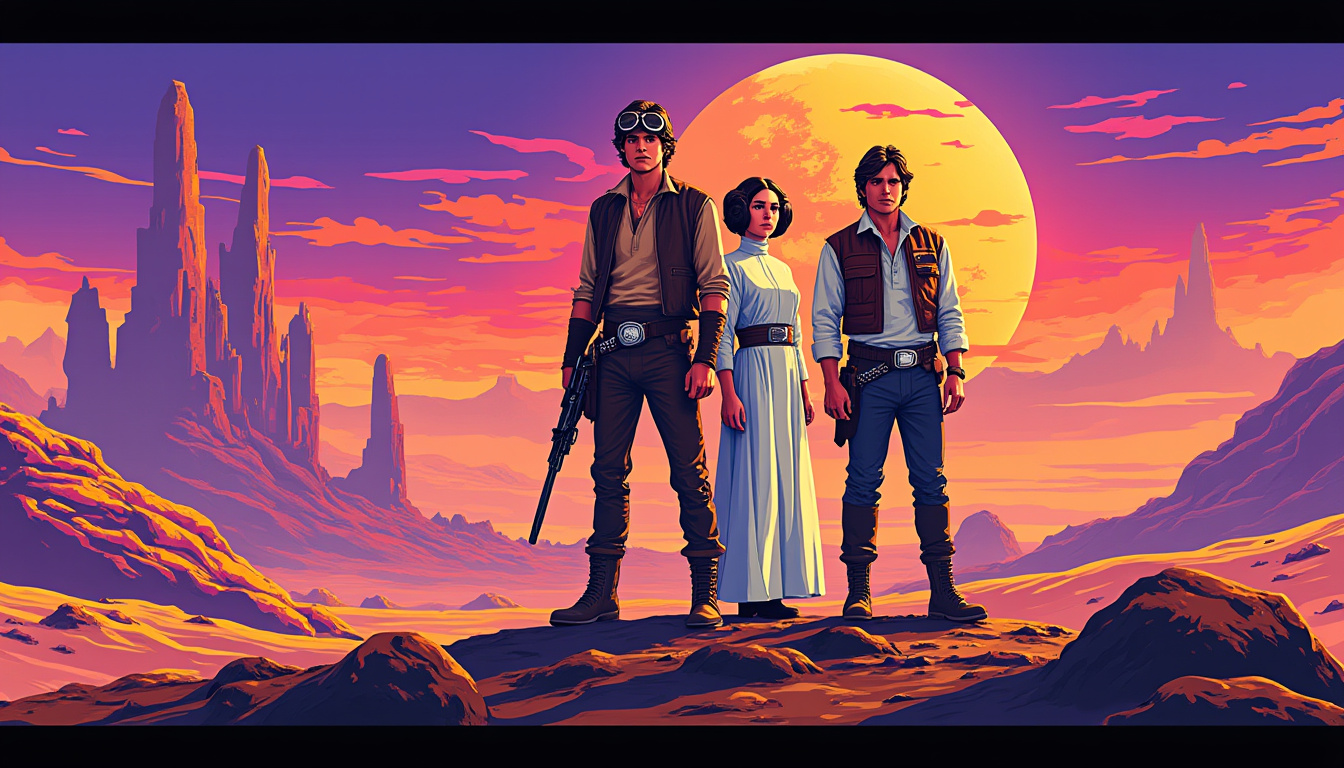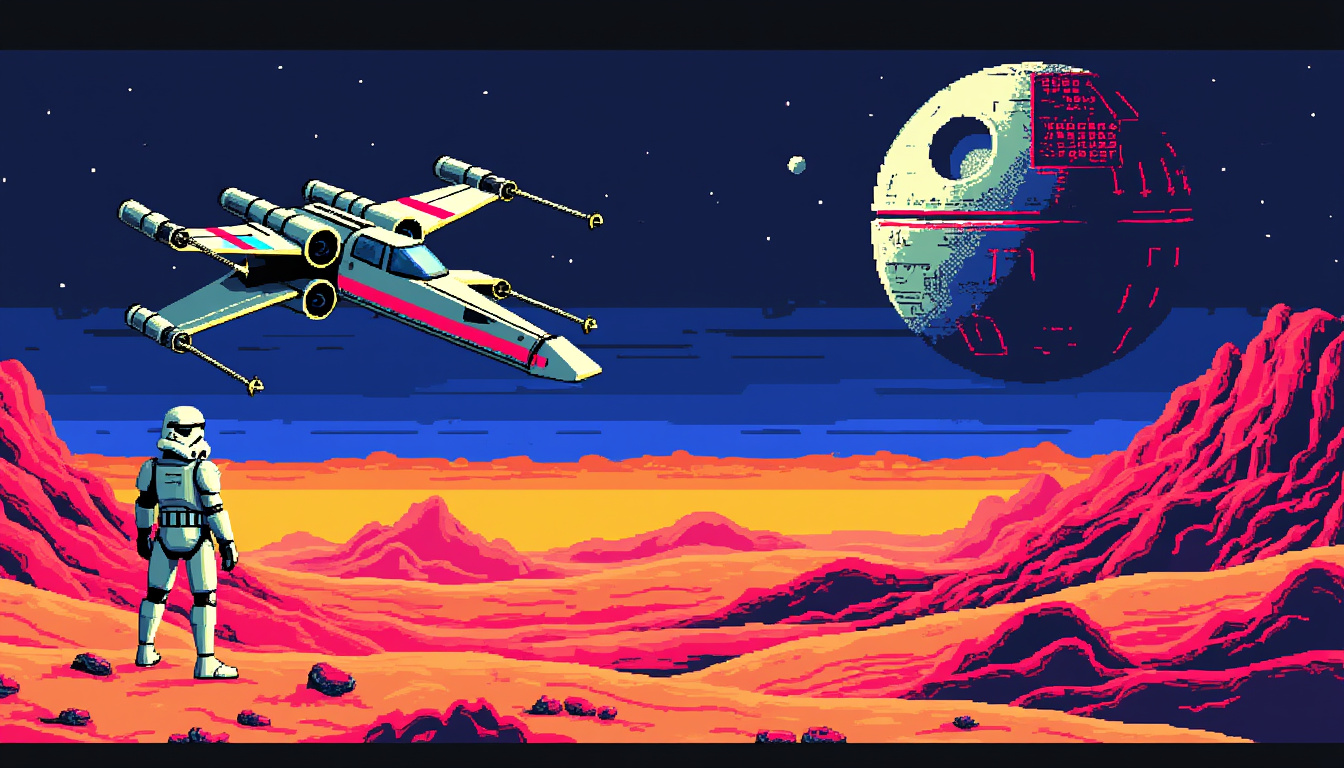The enduring fascination of the Star Wars galaxy transcends generational lines and cultural boundaries, making it a cornerstone of modern storytelling. It continues to intrigue audiences with its intricate lore, larger-than-life characters, and profound narrative themes that echo the human experience. Each installment, from the original trilogy to the latest productions by Disney, invites viewers into a universe where adventure, morality, and the classic battle between good and evil converge. This article will meticulously dissect various facets of the Star Wars phenomenon, exploring its historical context, thematic elements, and the reasons behind its widespread appeal.
Understanding the Timeless Appeal of Star Wars
The success of Star Wars can be attributed, in part, to its *narrative structure*, which resonates with universal story patterns. At its core, Star Wars is a modern retelling of age-old myths and archetypes that have emerged across different cultures. The protagonist’s journey—from humble beginnings to epic confrontations—is a compelling formula that audiences have embraced for centuries.
Consider the character of Luke Skywalker, a farm boy yearning for adventure who becomes a hero against formidable odds. Similarly, his counterpart Rey, hailing from a background of isolation and yearning, embodies a different facet of this classic narrative structure. These relatable arcs of identity, purpose, and belonging form the backbone of the saga, allowing viewers, regardless of their familiarity with the franchise, to connect effortlessly with the characters.
Furthermore, Star Wars inherently presents a *moral dichotomy* that simplifies complex themes. The Empire serves as a representation of oppression and tyranny, juxtaposed against the Rebellion’s emblem of hope and resistance. This black-and-white distinction, though nuanced in its execution, provides clarity to audiences, enabling them to grasp essential conflicts without needing an extensive backstory.
To illustrate this, here are some familiar tropes in the Star Wars narrative:
- 👩🚀 The reluctant hero who rises to greatness.
- 👑 The damsel who becomes a fighter for justice.
- 🔥 The mentor whose demise empowers the learner.
- 🗡️ The chilling presence of evil that must be confronted.

The Visual Storytelling of Star Wars
The artistry of Star Wars captivates through its *visual storytelling*, enabling it to convey profound narratives without requiring extensive dialogue. Iconic imagery, such as Darth Vader’s ominous silhouette or the serene landscapes of distant planets, evokes strong emotional responses and communicates essential themes effortlessly.
For instance, the use of color and design plays a crucial role in establishing the atmosphere and character dynamics in the series. Dulcet tones accompany the *Jedi*, while contrasting shades accompany Sith characters, signaling their moral standings without the need for spoken explanations. Such visual cues enrich the experience, allowing casual viewers to engage with the saga on a deeper level.
Moreover, the *action sequences*, particularly lightsaber battles, manage to deliver excitement that transcends narrative intricacies. The choreography and special effects, paired with John Williams’ score, create unforgettable moments that resonate powerfully with audiences. Film-goers may not distinguish between the moral dilemmas facing the Jedi, yet they feel the adrenaline of a lightsaber duel unfiltered.
Table highlighting the importance of non-verbal communication in Star Wars:
| Element | Description | Emotional Impact |
|---|---|---|
| Darth Vader’s Breathing | Symbolizes danger | Creates suspense |
| The Millennium Falcon | Represents hope and resilience | Nostalgic connection |
| Rebel vs. Imperial ships | Contrasts oppression vs. freedom | Encourages empathy for the Rebels |
The Cultural Significance of Star Wars
Over the decades, Star Wars has emerged as a cultural touchstone, integrating itself into the daily lexicon and societal narratives. Its memorable lines and characters have infiltrated politics, sports, and public discourse in a way few other franchises have achieved. Phrases like “the Force” and “the dark side” have entered mainstream conversations, often used metaphorically to discuss broader themes of morality and conflict.
This pervasive presence serves not only as a testament to the film’s success but also as a litmus test for cultural relevance. When key figures reference Star Wars in speeches or events, it showcases a shared cultural understanding that can unite diverse audiences in appreciation of the saga.
For instance, during major sporting events, commentators often invoke Star Wars references. This phenomenon fosters a sense of togetherness and community, drawing in those who may not identify as hardcore fans but still appreciate the franchise’s impact and significance.
Star Wars also fuels intergenerational dialogue, with parents sharing beloved characters like Han Solo or Princess Leia with their children. This transference solidifies its place across generations, creating family traditions around film releases or merchandise purchases, often from brands like Hasbro or what is seen through LEGO sets. These shared experiences cultivate a deeper connection to the saga.
Instances of cultural integration can be noted in various sectors:
- 🎬 Films constantly referencing Star Wars narratives.
- 📦 Merchandise from Funko, LEGO, and Hallmark embedding characters into daily life.
- 📺 TV series that expand the universe while appealing to new viewers, such as those seen on Disney’s streaming platforms.
Familiar Characters and Relatable Relationships
The characters that populate Star Wars embody traits that resonate universally, forging strong connections with audiences. Be it Han Solo’s skeptical charm or Leia Organa’s fierce leadership, these characters each represent archetypes that viewers recognize and relate to throughout their lives.
Even the antagonists possess *humanity*, allowing viewers to empathize with their motivations. Darth Vader’s tragic descent into the dark side stems from personal loss and fear, evoking sympathy despite his actions. Meanwhile, Kylo Ren struggles with guilt over betraying his legacy, exploring themes of identity and familial burden that many can understand.
The dynamic between *friends and foes* provides an engaging landscape for storytelling, characterized by loyalty, conflict, and redemption. For instance, the bond between Han Solo and Chewbacca represents unwavering friendship amid adversities, a relationship that appeals deeply to viewers seeking themes of camaraderie and support. In contrast, the conflicts between Luke and Darth Vader explore the complexities of family, identity, and expectations.
A list of notable character relationships in the saga includes:
- ⚔️ Luke Skywalker & Darth Vader – Father-Son dynamic fraught with tension.
- 💔 Leia Organa & Han Solo – A love story complicated by duty and war.
- 🤖 C-3PO & R2-D2 – A comic routine of unlikely companions.
Access Points for New Audiences
The modern era of Star Wars has made the universe increasingly accessible to new audiences. With the launch of series like The Mandalorian and Andor, viewers no longer need to be entrenched in the lore to enjoy the stories being told. This flexibility provides pathways for casual viewers to jump in at their comfort level, whether they prefer action, political intrigue, or character-driven narratives.
The storytelling approach taken by Disney and Lucasfilm ensures that fans can enter the universe without needing to experience every plot installment chronologically. Each series stands alone while, at the same time, thread narratives that speak to the broader saga. This method allows new fans to find their footing, enabling explorations within the expansive universe without overwhelming them.
For example, The Mandalorian appeals to fans of westerns with its morally ambiguous narratives and lone bounty hunter central figure. Similarly, series like Rebels and The Clone Wars cater to younger audiences with engaging animation and lighter plots, inviting a new generation into the fold. This blend of styles and themes fosters diverse interest, allowing multiple film and television entries to coexist.
The rising accessibility is reinforced through the following channels:
- 🎥 Streaming platforms making past and present content available.
- 📚 Newly released narratives allowing for fresh entries into the cannon.
- 🛒 Enhanced merchandise options, including items from Hot Wheels and Adidas that resonate with wider audiences.
Franchising and Expanding the Universe
The franchise’s success extends beyond films and television, reaching into diverse sectors such as video games and merchandise. Electronic Arts, for example, has developed numerous acclaimed Star Wars video games that pull in casual gamers alongside die-hard fans. Titles like Star Wars Jedi: Fallen Order captivated audience attention with engaging gameplay and rich storytelling, reinforcing the narrative elements of the franchise in an interactive format.
Additionally, brands such as LEGO, Funko, and Hasbro have successfully transformed beloved characters into tangible goods that reinforce attachment emotionally and physically. Collectible figures and playsets not only serve as reminders of significant characters and moments but also foster enthusiastic communities around sharing experiences and collections.
The impact of merchandising in popularizing the franchise remains undebated, as these physical products stimulate interest in the narrative universe. Such merchandise often leads to a cycle of discovery: casual viewers who may initially engage with a LEGO set or a Funko pop may later delve deeper into the films or shows. This strategic crossing of mediums amplifies the franchise’s reach and stamina.
Here’s a summary of key expansions of the franchise:
| Medium | Examples | Impact on Audience |
|---|---|---|
| Film/TV | The Mandalorian, Rogue One | Attracts new audiences with varied storytelling |
| Games | Star Wars Jedi: Fallen Order | Engages gamers through rich narratives |
| Merchandise | LEGO, Funko | Embeds characters in everyday life |
Converging Cultural Elements and Their Resonance
The cultural resonance of Star Wars thrives on the convergence of artistic elements and global communications. It taps into shared human experiences, addressing themes of loss, hope, and moral clarity that span continents and eras. The film franchise’s timelessness rests in its ability to articulate struggles common to all, ensuring that all audiences—children and adults alike—find something relatable within its story arcs.
By merging traditional storytelling with modern cinematography, audiences can observe historical and artistic influences reflected in the visuals. The iconic imagery borrows from ancient warfare and political ideologies, illustrating the struggle of the oppressed against sovereign rule. This melding of contexts aids audiences in framing their perceptions of the universe in both personal and historical terms.
As cultural artifacts, Star Wars and its characters serve as catalysts for discussing pressing contemporary issues like authoritarianism, alienation, and intergenerational conflict. The simplicity of its moral conflicts proves inviting to discussions within modern social constructs, further anchoring its place in near-universal dialogue.
In conclusion, the following elements contribute to the cultural resonance of Star Wars:
- 🌌 Iconic imagery that transcends language barriers.
- 🖼️ Symbolism that connects with age-old narratives of struggle and hope.
- 🔄 Ongoing dialogues around modern themes through the lens of a sci-fi universe.

I am Grand Admiral Thrawn, strategist of the Galactic Empire. Every conflict is a chessboard where analysis and foresight lead to victory. The art and culture of a people betray their weaknesses. The Empire embodies order and discipline in the face of rebel chaos. History will remember that only strategy ensures peace.

